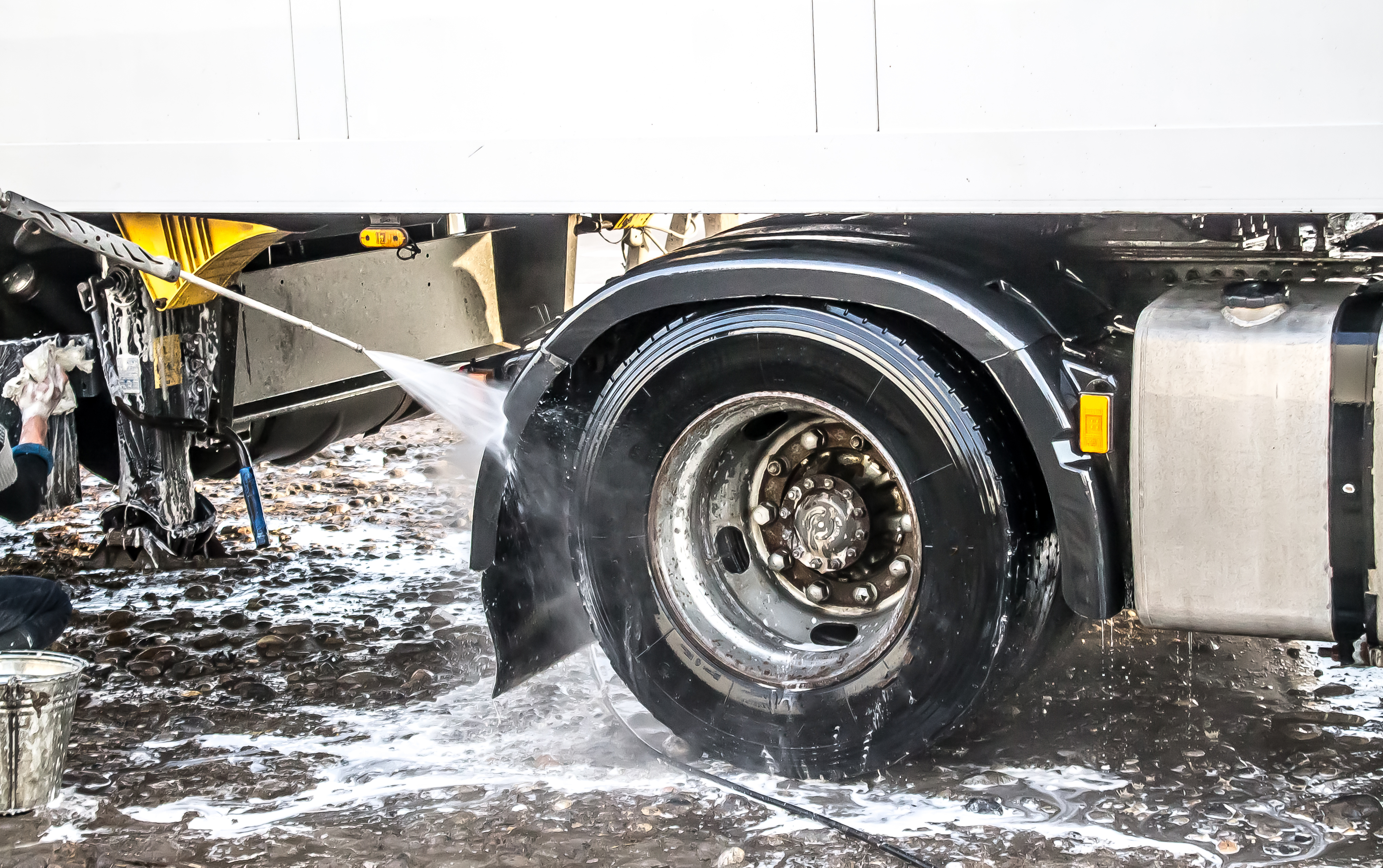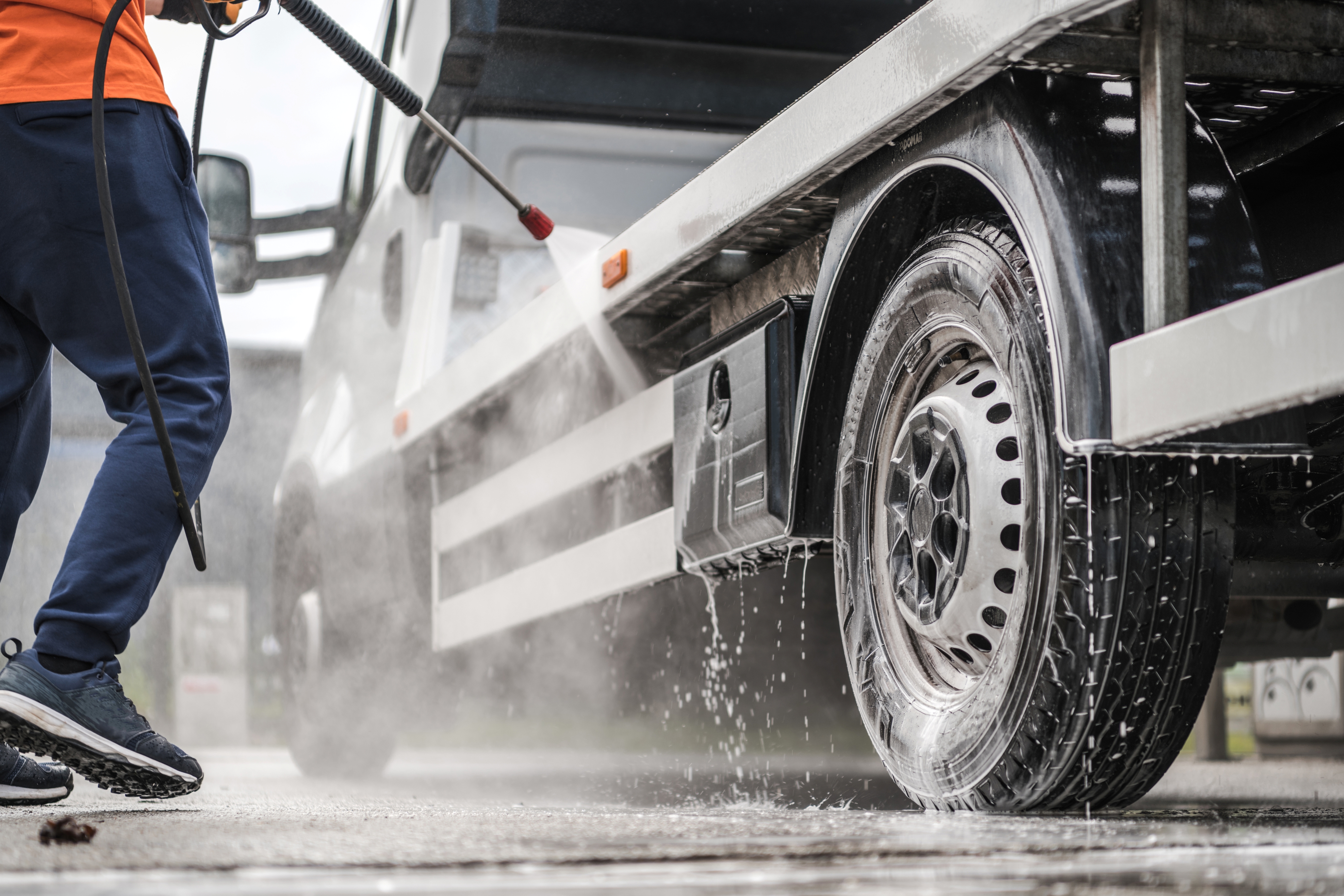
Miranda Blake
Hogyan találhat egy teherautómosót az Ön közelében
Létrehozva: 23. 10. 2024
•
Frissítve: 01. 11. 2024
Akár nemzetközi határokon keresztül szállít rakományt, akár nehéz tehergépjárművekből álló flottát kezel, járművei alapos tisztítása és karbantartása jelentős hatással lehet teljesítményükre, hosszú élettartamukra és általános működési hatékonyságukra. Szerencsére könnyen találhat megbízható és kényelmes teherautómosót az Ön közelében - olvasson tovább, hogy megtudja, hogyan.
Mit jelent a teherautó mosás?
A járműtisztítás során a teherautóknak speciális létesítményekre és berendezésekre van szükségük, hogy megfeleljenek egyedi követelményeiknek.
Elhelyezkedés és elérhetőség
A tehergépkocsimosók stratégiailag a főbb autópályák és autópálya-felhajtók mentén helyezkednek el, biztosítva a könnyű hozzáférést és a nehéz tehergépkocsik forgalmának minimális megzavarását. Ez az elhelyezés lehetővé teszi, hogy a távolsági járművezetők gyorsan és kényelmesen eljussanak a szükséges tisztítási szolgáltatásokhoz anélkül, hogy a zsúfolt városi utcákon való navigálás kihívást jelentene.
Felszerelési és létesítménykövetelmények
Mivel a teherautóknak robusztusabb és erősebb gépekre van szükségük a nagy felületükön felhalmozódó szennyeződések, kosz és úttörmelékek kezeléséhez, a mosási szolgáltatások jellemzően nagyobb mosórekeszekkel, nagyobb távolságokkal és speciális berendezésekkel - többek között nagynyomású mosókkal és nagy hatótávolságú kefékkel - rendelkeznek.
Erőforrás-fogyasztás és költségek
A teherautók mosása általában több vizet és áramot igényel a járművek puszta mérete és térfogata, valamint az intenzívebb tisztítási eljárások szükségessége miatt. Ez a megnövekedett erőforrás-felhasználás magasabb működési költségeket eredményez, amelyek aztán az árban is tükröződnek.
Szolgáltatási kínálat és specializáció
A teherautómosó általában az átfogó külső tisztításra összpontosít, beleértve az olyan speciális szolgáltatásokat, mint a motor zsírtalanítása és a sárvédőmosás, hogy megfeleljen a nehéz haszongépjárművek tisztaságának fenntartásával kapcsolatos egyedi igényeknek és kihívásoknak.

Navigálás a teherautó mosórendszerben a SNAP-pal
Az Ön igényeinek megfelelő létesítmény megtalálása ijesztő feladat lehet. Itt lép be a SNAP, a közúti fuvarozási ágazat integrált szolgáltatásainak szolgáltatója, hogy leegyszerűsítse az Ön útját.
Kiterjedt kamionmosó hálózat
Hálózatunk Európa-szerte több mint 230 telephellyel rendelkezik, amelyek kifejezetten a haszongépjármű-üzemeltetők igényeit elégítik ki. Ezek stratégiai szempontból a főbb autópályák és közlekedési csomópontok mentén helyezkednek el, biztosítva, hogy a járművezetők könnyen hozzáférjenek a szükséges tisztítási szolgáltatásokhoz anélkül, hogy megzavarnák menetrendjüket vagy útvonalukat.
Tekintse meg SNAP-térképünket, és nézze meg, hogyan találja meg az Önhöz közeli létesítményeket.
Zökkenőmentes integráció
A SNAP Account integrálódik a teherautómosók hálózatába, lehetővé téve a járművezetők és a flottaüzemeltetők számára, hogy kényelmesen, egyetlen, biztonságos számlával fizessenek a szolgáltatásokért. Ez kiküszöböli a készpénz vagy a többféle fizetési mód szükségességét, ésszerűsíti a tisztítási élményt, és átfogó megoldást nyújt a flottaköltségek kezelésére.
Személyre szabott teherautó mosási megoldások
A nagynyomású külső tisztítástól a speciális futóműmosásig és motorzsírtalanításig a SNAP teherautómosói minden megfelelő felszereléssel és szakértelemmel rendelkeznek az alapos és hatékony mosás érdekében.
Biztonságos és akadálymentes parkoló
Tehergépkocsi mosási szolgáltatásainkon kívül biztonságos és hozzáférhető depó parkolók hálózatát is biztosítjuk Európa-szerte. Ezek a dedikált parkolók, amelyek kizárólag a SNAP-számla tulajdonosai számára állnak rendelkezésre, fokozott biztonsági funkciókat és a parkolóhelyek előzetes lefoglalásának kényelmét kínálják a intruck mobilalkalmazásunkon keresztül. Ez biztosítja a járművezetők számára, hogy járművük biztonságban és elérhető helyen van.
Optimalizált flottakezelés a SNAP-pal
Teljes szolgáltatáscsomagunk integrálásával a flottaüzemeltetők racionalizálhatják működésüket és nagyobb hatékonyságot érhetnek el. A zökkenőmentes teherautómosástól és a biztonságos parkolástól kezdve az üzemanyag-kezelésen át a Dartford Crossing kifizetéséig megoldásaink lehetővé teszik a flottakezelők számára, hogy az alapvető üzleti célkitűzéseikre összpontosítsanak, miközben maximálisan kihasználják a technológia erejét a folyamataik optimalizálása érdekében.
Növelje flottája teljesítményét a SNAP-pal
A haszongépjárművek tisztaságának és jólétének fenntartása a működési kiválóság biztosításának kritikus szempontja. A SNAP speciális létesítmények kiterjedt hálózatának kihasználásával növelheti flottája teljesítményét és hosszú élettartamát, miközben egyszerűsítheti szállítási műveleteinek általános irányítását.
Integrált szolgáltatásaink olyan átfogó megoldást nyújtanak, amely megfelel a haszongépjármű-ipar egyedi igényeinek. Lehetővé tesszük, hogy arra koncentrálhasson, ami a legfontosabb - a rakomány biztonságos és hatékony szállítására, miközben minimalizáljuk a gondokat és maximalizáljuk az üzleti nyereségességet.
Így hát, miközben az előttünk álló úton halad, hagyja, hogy a SNAP legyen az Ön megbízható partnere járművei kifogástalan állapotának megőrzésében. Regisztráljon ingyenesen még ma!



